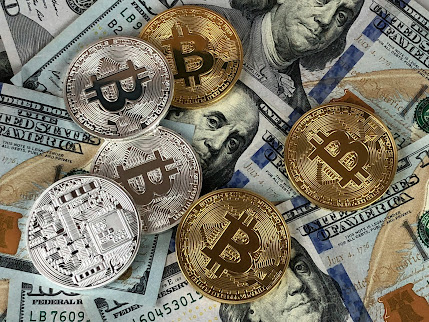The Evolution of Money: From Barter to Cryptocurrency
Money, as a concept, has transformed significantly throughout history. Starting from basic barter systems to the emergence of cryptocurrency, every stage of money's development reflects changes in society and advances in technology. In this blog post, we will explore the five major stages in the evolution of money and delve into the future of finance cryptocurrency. We’ll also look at the benefits of cryptocurrency and the challenges it faces.
Stage 1: The Barter System
Before the invention of money, people relied on bartering to trade goods and services. For example, one might trade a cow for a horse or even a more peculiar exchange like a cat for a horse. However, this system was inefficient because it required a "double coincidence of wants," where both parties had to want what the other was offering. This limitation led to the next phase in the evolution of money.
Stage 2: The Birth of Coins
To overcome the inefficiencies of barter, ancient societies developed coins made from valuable metals such as gold and silver. Coins represented a standardized unit of value, making trade much easier. For example, the British pound initially represented one pound of silver. The introduction of coins marked a significant leap toward more efficient trade, as people no longer had to directly barter for goods.
Stage 3: The Era of Paper Money
While coins improved the trading process, they were often cumbersome to carry in large amounts. This problem led to the rise of paper money, which represented value based on the trust in the issuing government rather than the intrinsic worth of its material. For example, today’s ten-pound note is a promise from the Bank of England that it can be exchanged for goods or services of equivalent value.
Stage 4: Digital Money and Bank Entries
With the advent of technology, money evolved once again into digital currency. Credit cards, bank transfers, and online payments made it possible to conduct transactions without any physical exchange of cash or coins. This form of money is merely a digital entry in a bank's system, allowing for instant transactions through a few clicks or taps.
Stage 5: Cryptocurrency - The Digital Revolution
The latest innovation in the world of finance is cryptocurrency, a digital form of money that operates on blockchain technology. Unlike traditional money, cryptocurrency is decentralized and does not rely on governments or banks to function. Popular cryptocurrencies like Bitcoin and Ethereum are stored in a public ledger maintained by a network of computers around the world, ensuring transparency and security.
Why Cryptocurrency Is the Future of Money
-
Decentralization: Cryptocurrency operates on a peer-to-peer network, allowing individuals to trade directly without intermediaries such as banks.
-
Security: Blockchain ensures that all transactions are secure and nearly impossible to alter, reducing the risk of fraud.
-
Global Reach: Cryptocurrencies can be used anywhere in the world, offering financial inclusion even in regions with limited access to traditional banking.
-
Low Fees: Unlike traditional banking systems, cryptocurrencies enable fast international transactions with minimal fees.
Blockchain Technology: The Backbone of Cryptocurrency
At the core of cryptocurrencies is blockchain, a decentralized ledger that records all transactions. Every transaction is stored in a "block," and each block is linked to the one before it, making the entire system highly secure. Changing one block would require altering the entire blockchain—a nearly impossible task.
Challenges Facing Cryptocurrency
While cryptocurrency offers numerous benefits, it is not without challenges:
-
Volatility: Cryptocurrency values are highly volatile, often subject to rapid fluctuations due to market speculation.
-
Limited Acceptance: Although adoption is growing, many businesses and governments still do not accept cryptocurrency as a valid form of payment.
-
Environmental Impact: Cryptocurrency mining requires massive amounts of energy, which has raised concerns about its environmental footprint.
-
Regulatory Uncertainty: Cryptocurrencies operate in a relatively unregulated space, leading to concerns over illegal activities and fraud.
The Rise of NFTs and Dogecoin: Quirks of the Crypto World
In addition to traditional cryptocurrencies, the digital space has seen the emergence of NFTs (Non-Fungible Tokens) and Dogecoin. NFTs are unique digital assets, often associated with art or music, that can be bought and sold like traditional collectibles. On the other hand, Dogecoin, originally created as a joke, has gained significant popularity, showcasing the speculative and unpredictable nature of the crypto world.
The Future of Money
The rise of cryptocurrency marks a transformative moment in the history of money. As blockchain technology continues to evolve, cryptocurrencies have the potential to revolutionize financial systems by offering decentralized, secure, and borderless methods of transaction. However, challenges such as volatility, regulation, and environmental impact must be addressed before cryptocurrencies can achieve mainstream adoption.
Cryptocurrency is still in its early stages, but it’s clear that it will play a crucial role in shaping the future of global finance.

